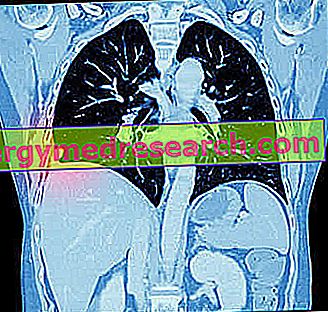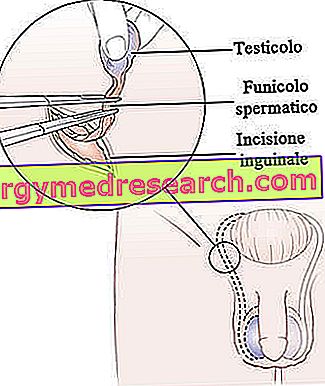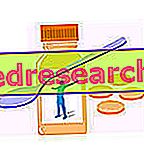What is that
What does kinesitherapy mean?
Kinesiotherapy (kinesiotherapy or kinesiatry) is a noun that derives from the union of the two Greek words "kinésis" (movement) and "therapeía" (cure or remedy); literally means "method of care through movement".

Study
Path of study for physiotherapy
If by kinesitherapy we mean the practical application of kinesiology *, the figure of reference is undoubtedly the graduate in physical education (motion scientist), with specific orientation to functional preventive and rehabilitative activities (and not only). Note : as governed by law 4/2013, in addition to possessing the aforementioned qualification, the kinesiologist is registered with the National Union of Kinesiologists (UNC). On the other hand, he works in the field of physiotherapy with particular reference to rehabilitation based on various techniques of manipulation, even the graduate in physiotherapy. A clear distinction between the two specific activities is not always evident; on the one hand, both these professional figures share certain methods and tools, but, on the other, they show rather specific skills that can make the difference in the choice of one or the other expert.
* Scientific discipline that studies rational human movement in its various areas: intellectual - cognitive, affective - emotional, physical - motor and social - relational.
Kinesiotherapy: kinesiology VS physiotherapy
It could be said that the intervention of the physiotherapist is preparatory and essential to that of the kinesiologist, and that he therefore has slightly different but closely related objectives. The table that follows, directly extrapolated from what was released by the Association of Graduates in
ISEF Motor Sciences and Graduates, summarizes the main differences between physiotherapy and kinesiology:
| PROFESSIONAL PROFILE | |
| KINESIOLOGIST | PHYSIOTHERAPIST |
| Profession for health well-being | Health profession |
| Three-year degree course | Three-year degree course |
| Master's degree (5 years) | Motor and neuromotor rehabilitation |
| Preventive and adapted physical activity | Treatment of unregulated patients |
| Motor re-adjustment | |
| Riatletizzazione | |
| Athletic preparation | |
| Sports for healthy and differently-abled people | |
| Treatment of stabilized patients | |
objectives
What is kinesiotherapy for?
Kinesiotherapy is a widely used therapeutic method, recognized and consolidated since the beginning of the 20th century. It is an individual medical remedy of the manual type, mainly aimed at dissolving the tissues which, stiffening, compromise the physiological joint mobility. The main causes of tissue inflexibility and reduction of joint excursion are:
- Muscular and tendinous traumas
- Bone fractures
- Traumas of the central nervous system (brain and spinal cord) and peripheral (nerves)
- Joint impairments
- Surgical interventions that require long periods of immobility
- Degenerative, hereditary or acquired disorders of joints, bones, muscles and nervous tissue.
As a second objective, kinesitherapy is destined to increase the strength and resistance of the muscles necessary for the movement of the affected joint.
Method
Kinesiotherapy method
Kinesiotherapy is based on the movement of one or more body districts. Through manual therapy, the technician counteracts the joint limitation by "progressively" forcing the movement. The treatments have a duration of between 30-60 'and an intensity that must respect the healing times, without causing side effects such as pain. In this way, it allows to gradually regain joint mobility on all physiological planes.
Kinesiotherapy is organized in 3 levels:
- Passive Chinesi : the gesture is accompanied exclusively by the kinesitherapist
- I asked assisted : the gesture is carried out by the kinesitherapist with the partial collaboration of the subject who, by definition, must at least be able to support the weight of the body segment concerned
- I asked for active : the gesture is carried out entirely by the patient, even if sometimes only for a few repetitions.
Thanks to the therapeutic progression of the 3 levels, once the patient's complete autonomy has been reached, kinesitherapy evolves into rehabilitative motor therapy.
Kinesiotherapy related activities
Kinesiotherapy is often associated with massotherapy (profound or simple physiotherapeutic manipulations), postural therapy, neuro-motor reconditioning and the use of various electronic instruments such as tecar therapy, ultrasounds, tens, shock waves etc., useful for:
- Reduce pain and inflammation
- Relax the tissues
- Promote vascularization etc.
Profession
Objectives of kinesitherapy
Kinesiotherapy can be exercised independently, although patients are often referred (under prescription) by a primary care physician or specialist (orthopedist, physiatrist).
The kinesiotherapy activity can be carried out in public health (eg hospitals and ASL) and in the private sector (eg clinics and clinics); it is widespread in sports medicine facilities and rehabilitation centers. To practice kinesitherapy it is essential that the premises are suitable, in accordance with and respectful of what is expressed by the laws on hygiene and occupational safety.



